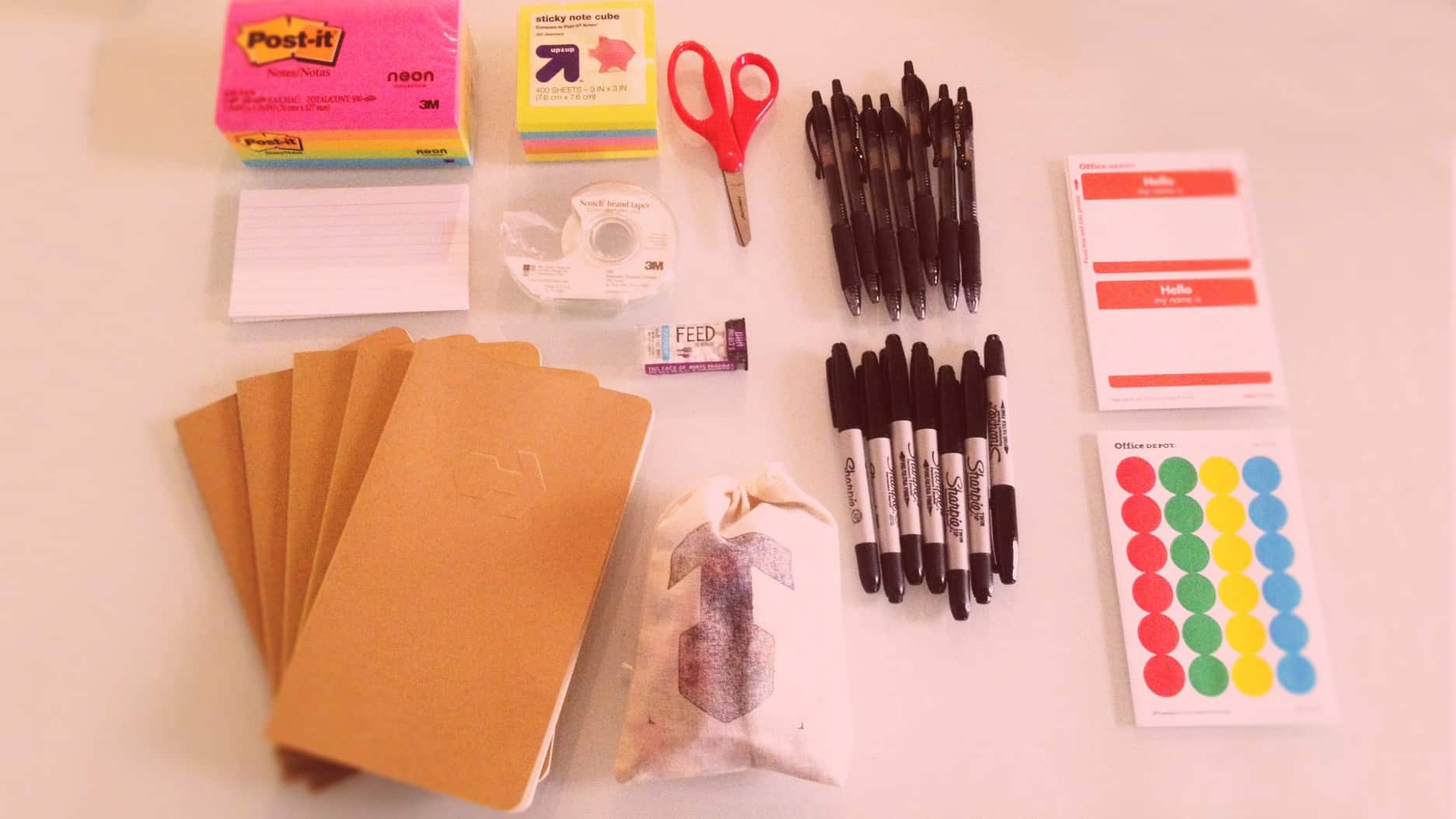Welcome to our guide for digital innovation! First things first, we’re glad you’re here. We know that the process of building new products and ideas, especially ones that might involve digital tools, can so often feel really, really tricky. Things are constantly changing, tools and processes feel expensive and hard to test, and so often organizations (maybe the ones you work within) are great at maintaining the status quo — but breaking out of those bounds can feel almost impossible. Even knowing what it means for your organization to be innovative can be challenging, and knowing where to start is maybe the hardest part.
So it was for these reasons and so many others that we built this guide for digital innovation. We’re here to help real people like you more easily understand what it takes to build innovative digital tools by doing a few simple things like putting people first, allowing space for collaboration, staying close to those experiencing the problems, and exploring new ways to generate ideas.
But first, let’s talk about a few terms, and what we think they are and aren’t.
Digital innovation, you say? What does that mean?
When we say digital innovation at CauseLabs, what we mean is a core culture of innovation (aka, brand new ways of doing things) that is so often supported and scaled with digital.
And let’s get this out there early to be clear: We don’t think digital is going to change the world. Truth is, it’s all about great ideas. New, different, focused, purposeful ideas… that, we’ve learned, often need digital tools to reach 21st-century scale. We know that using technology is far from a silver bullet, but we also know that we’re in a world in which technology, whether big or small, rich or poor, is already central or is on its way there. So when we can, let’s build with it.
With that in mind, what you can expect out of these next few weeks is a walkthrough of how we start almost all of our work at CauseLabs. It’s not rocket science, but we’ve seen it succeed and know it works, and we truly want others to be able to experience this process along with us. It will range from the simple and focused to the out-there and challenging — so get ready!
But first, these next few steps are all about setting the groundwork, so let’s get started as we ease into the guide together.
3 Things to Do Before Week 1
Before we officially get things started next week, there’s a little bit of homework to do. To get ready, you’ll need to do these three things:
1. Draft a Problem Statement
2. Form a Digital Innovation Team
3. Set Up Tools
1. Draft a Problem Statement
Every idea worth solving starts with a problem, and your first order of business is to start to articulate your problem in a single sentence. Will the first try be bad? Yep. Will the second? Probably (definitely). So keep going! It doesn’t have to be perfect, so use this first step to get comfortable with the idea of trying, failing, iterating, and repeating.
This is all part of the digital innovation process. If you can get comfortable with that rhythm, it will help greatly as you go along this guide. And don’t forget, failure is a good thing. Not to mention, your problem statement will only get better. The goal of the problem statement is that it will anchor this entire experience from end to end, so be sure to give it a few versions before moving on.
When we write our problem statements, we like to follow a consistent “How Might We” structure. Here’s a good template to follow when writing yours:
How might we [human-oriented problem to solve] …through/by [big hunch about the innovation] …so that [important outcome that will happen].
For example, here are a few good ones:
How might we help entrepreneurs navigate their journey with a city-wide platform so that economic growth is supercharged?
How might we help time-crunched early learning educators find books through a better discovery experience that helps meet their students’ specific needs?
How might we create a simple workplace product that adapts to and engages the ambitions of the financially underserved in order to establish a path of financial control?
To contrast, here are a few not-so-good examples, especially within the context of our 4-week timeline:
How might we solve world hunger?
Too broad, and not specific enough to ideate around.
How might we increase revenues through a new digital product line?
Not human-centered. While it’s not bad to increase revenues, we miss a lot of energy by leaving out the human reason to do so!
How might we help citizens improve their financial security?
It’s a great start, but it doesn’t advance a specific “with” or “through” or get towards a big why. We often start brainstorming sessions in this way and complete the sentence, having started with the hunch and why, to have something we can test against.
The keys to a good problem statement: Be human-centered, and be clear about the Why. Bonus points if it feels exciting!
NOTE: The best HMW’s frame the problem without limiting the solution, so try to keep it at a place where a variety of solutions could answer the question.
2. Form a Digital Innovation Team
This won’t come as a big surprise, but this is super important. To rally a great group of people and create a committed team is going to be crucial, but don’t confuse crucial with difficult. You don’t need to find a cast of superheroes. You’ll just need to find a team that will interact well together, and hopefully, you can create collaborations with people who might not typically work together. We’ve found that building a team with people from varying backgrounds, experiences, projects, and work styles is best — the more diverse the better. And four seems to be a magic number.
We’ll need a few basic roles filled, but you can decide who fills these roles and how much time needs to be committed to each.

Organizer. This role will keep a schedule, tasks, and content organized so that nothing gets lost along the way and the team stays focused. Most importantly, this person will strengthen and support all of the roles and for that reason is a crucial part of the team. If you want to designate a project lead, this role could be a great fit, or feel free to champion leadership from any of the other roles.
Strategist. This role holds the space for creative problem-solving, keeps the tone and mood of the process open and human-centered, gleaning insights from research, and is an excellent synthesizer. Everyone can and should be strategizing, but this role holds the space and leads that vision guiding everyone toward digital innovation.
Designer. This role works closely with the Strategist to visualize emergent themes on paper and/or digitally, especially during Workshops (more on that in the coming weeks). This role will help the team move from problem to visualized concepts that can be tested with real people.
Technologist. This role serves as an important resource when emergent concepts intersect with emerging technologies. Digital innovaton must still be rooted in reality. While keeping an open and positive mind, he/she can speak to feasibility and explore what’s possible in the software and hardware scenes.
NOTE: Any role can be filled by anyone regardless of whether they are leading those tasks in your organization daily. Basically, your designer role doesn’t have to be filled by a designer. Shake it up. Sometimes it’s better if you work out new muscles together.
3. Set Up Tools
As you establish your team, these tools will be led by your Organizer. They’re all very simple, so whether that might be you or not, getting them up and running in a few minutes is the first step. This is most important if you plan to have a distributed team, but it’s also good practice to have a digital home base to keep things active while the team isn’t physically together. As a good way to get started, here are the tools we turn to the most:
We’ve used Trello, Airtable, and Ideanote to capture ideas to discuss, hunches to experiment with, and assumptions to validate. And it works almost like a wall of Post-its, allowing you to move notes and ideas forward as they progress. It’s a great way to keep things organized and tag people with tasks.
For file organization and collaboration, Google Drive or other shared document repository with real-time live updates is essential for organizing and creating content, capturing notes from interviews, and organizing photos and drawings.
You can save and share them all from a Google Drive folder, or Dropbox is another great option to store files. For remote teams, we like Google Slides, Concept Board, or Miro to visualize ideas and organize content that the group creates. For future reference, and when sketches need to turn into something real, we like InVision and Figma to create rapid prototypes. Whether the concept is a digital product or a new program or process, making “the website” or “the app” for it can be a powerful exercise in going from idea to testable concept.
What’s Next
Week 1: Problem Immersion + Drawing Board
So that’s it for now! Be sure to get these important next steps started this week before moving forward, and don’t forget to have fun with this! Digital innovation is and should be a little messy. You’ll have moments where you feel awkward, but that’s all part of the challenge to create change. Make it your own and customize this guide to meet what your team needs most. We’ll catch you next week as we explain how to run the first Drawing Board and how you can use it to start building the next great innovative idea with your team.
Keep going with your digital innovation journey! Check out the next post, Week 1 →

